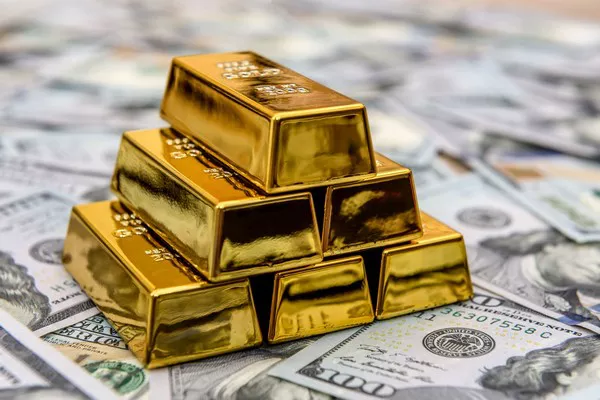The traditional inverse relationship between gold and the U.S. dollar is a fundamental concept in the world of finance. However, as with any market dynamic, there are exceptions and nuances that can challenge this established correlation. In this exploration of the exceptions to the inverse relationship between gold and the USD, we will delve deeper into the factors and scenarios that can cause this correlation to break down or become more complex. These exceptions are not just theoretical but can have real-world implications for investors and policymakers, shaping their understanding of how gold and the dollar interact within the global financial system.
1. Historical Context and Structural Shifts
One notable exception to the gold-dollar relationship arises from historical context and structural shifts in the global economy. During the gold standard era, when currencies were directly tied to gold, the relationship between gold and the U.S. dollar was more fixed and less prone to inverse movements. In this historical context, changes in the U.S. dollar’s value were constrained by the gold standard, leading to periods when both gold and the dollar moved together rather than inversely.
2. Extreme Market Sentiment and Panic Events
Exceptional market sentiment and panic events can disrupt the traditional inverse relationship between gold and the U.S. dollar. During periods of extreme fear and uncertainty, investors often seek safe haven assets, including both gold and the dollar. This simultaneous demand for safety can cause gold and the dollar to move in the same direction temporarily. These scenarios highlight the role of human psychology and collective behavior in influencing market dynamics.
3. Dollar Weakness Amidst Global Economic Turmoil
Another exception occurs when the U.S. dollar weakens due to factors like global economic turmoil or geopolitical tensions. In these situations, gold may rise in tandem with a weaker dollar. This phenomenon reflects the status of both assets as safe havens, as investors turn to them during times of crisis. The simultaneous appreciation of both gold and the dollar challenges the traditional inverse relationship and underscores the complex interplay of various market forces.
4. Divergent Central Bank Policies
Central bank policies can also create exceptions to the gold-dollar relationship. If the U.S. Federal Reserve implements aggressive monetary easing measures, such as lowering interest rates or expanding its balance sheet through quantitative easing, the U.S. dollar may weaken. Simultaneously, gold may rise due to expectations of inflation or currency devaluation. In this scenario, both assets move in the same direction, highlighting the role of central bank actions in shaping market dynamics.
FAQs on Exceptions to the Gold-Dollar Relationship
1. Can the gold-dollar relationship ever become entirely positive?
While it’s rare for the relationship to become entirely positive, it can happen during extreme events when both gold and the dollar are perceived as safe havens. However, these instances tend to be temporary and tied to specific circumstances.
2. How do changes in global economic conditions affect exceptions to the relationship?
Changes in global economic conditions, such as recessions or financial crises, can create exceptions by altering investor sentiment and changing the relative attractiveness of gold and the dollar.
3. Are exceptions more common in the short term or long term?
Exceptions often occur in the short term due to unique market conditions or events. The long-term trend typically follows the traditional inverse relationship.
4. What role do speculative traders play in exceptions to the relationship?
Speculative trading behavior can amplify exceptions to the relationship, especially during times of extreme market sentiment. Traders reacting to short-term events can influence prices.
5. Can exceptions provide trading opportunities?
Yes, exceptions can create trading opportunities for those who can identify and react to them effectively. However, they are often challenging to predict and navigate, requiring a deep understanding of market dynamics.
In conclusion, while the inverse relationship between gold and the U.S. dollar is a reliable and historically significant pattern, it is not immune to exceptions. These exceptions can arise due to various factors, including historical context, extreme market sentiment, divergent central bank policies, and global economic turmoil. Recognizing and understanding these exceptions is essential for investors and market analysts, as they provide insights into the intricate interplay between these two pivotal assets within the broader financial landscape.

